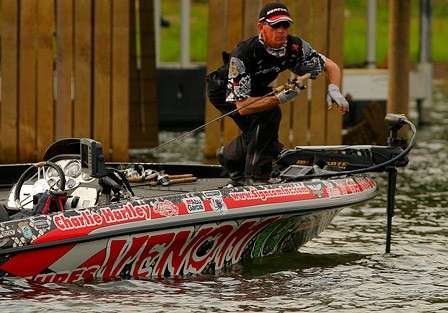
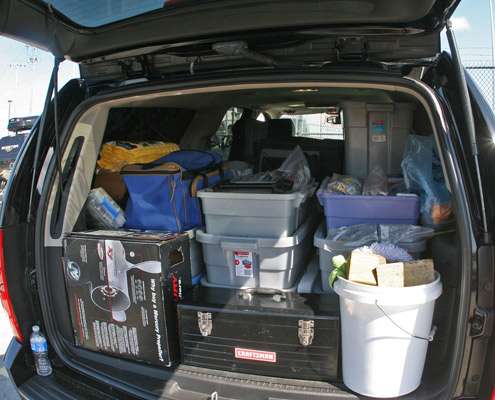
Charlie Hartleyâs truck may look full, but thatâs just because he takes everything he doesnât immediately need out of his boat. The rest of the stuff, like back-up equipment and lures, stays in his truck until he needs it. âGet everything out of the boat,â Hartley said. âNot only to make things lighter, but to protect them. If I know Iâm only going to use three techniques, I only need to have those things in the boat.â
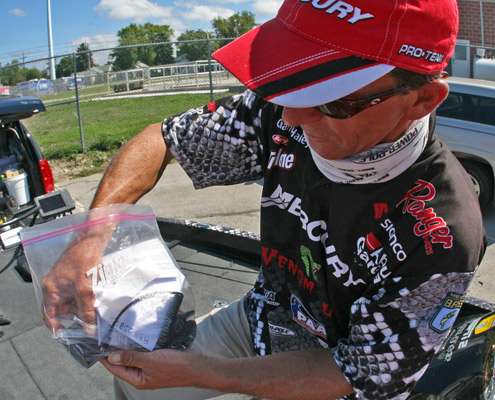
The Elite Series frequently runs across rough water, whether it is on Lake Erie or on a sprawling southern reservoir like Toledo Bend. Hartley protects his essentials by using a sealable plastic bag. âPut everything in ZipLoc ® bags, including your keys, cell phone and charger.â
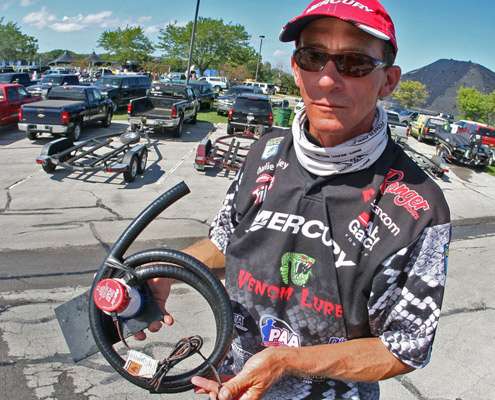
Being from Ohio, Hartley knows all about big water. When it gets rough, conditions can go from safe to dangerous in a hurry. A few waves over the front of the boat can put boat drivers in a world of hurt. Hartley says anyone can be prepared for that eventuality with a portable bilge pump. âI always carry a bilge pump you can put in the bottom of the boat and plug into a cigarette lighter.â
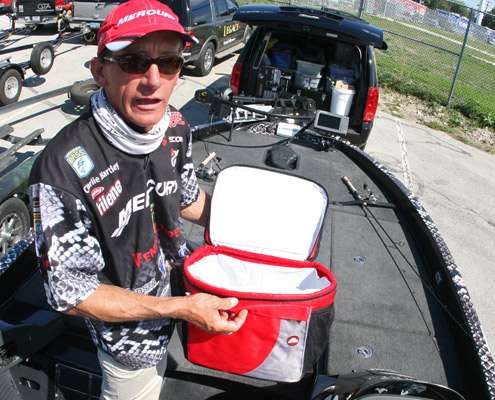
Hartley carries a cooler in addition to the one that comes with the boat. As a professional bass angler, Hartley fishes in all weather, from the freezing cold of the winter to the searing heat of the summer. Extra ice or extra room for beverages is always a plus.
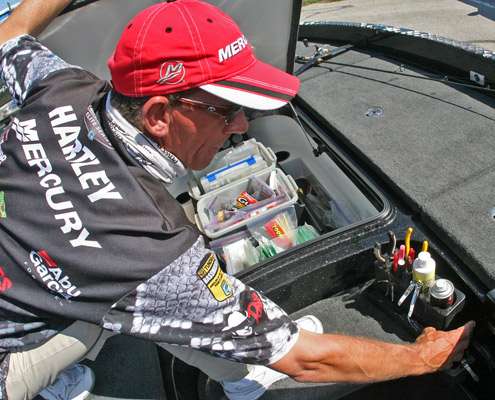
One of the more ingenious contraptions in Hartleyâs boat is this accessory tray. Hartley has rigged it so he can lock it onto the front deck. But when the waves start to build and the ride is going to be hairy, Hartley can remove it and lock it into his storage container. âThe great thing is how easy it is to unclip it from the deck when you are going to make a run,â Hartley said. âIt goes quickly into storage and is just as easily pulled back out. I can throw weights, hooks, clippers, hook sharpener, scent and pliers all into there.â
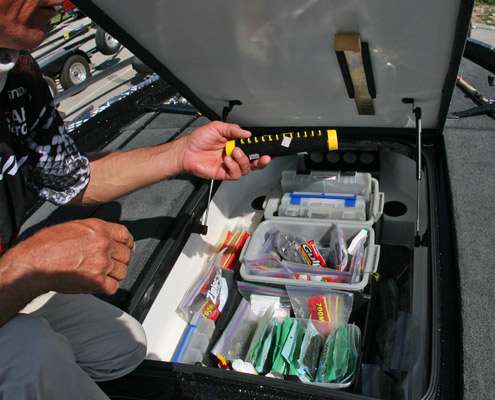
With every cast a premium, Hartley also makes sure to pre-rig some baits that he knows he is going to use. This comes in handy when using techniques with leaders such as drop shotting and Carolina rigging. âWhen I drop shot I use a leader, so it requires three knots,â Hartley said. âI pre-rig them so I only need to tie one knot.â
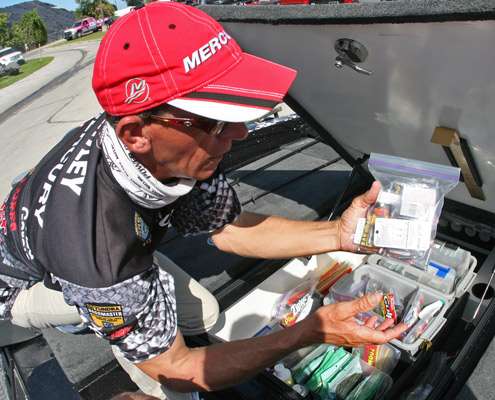
Many times, a boat can turn into a storage area of its own, but Hartley works hard to keep that from happening. Come tournament time, he wants to be able to find everything he needs as quickly as possible. His organization is meticulous in his main storage bin. Hartley divides his soft plastic bags by type in plastic storage containers and uses plastic bags to divide his weights and hooks. It also helps to keep them dry.
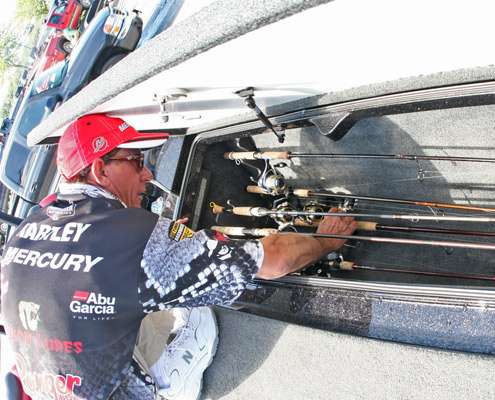
When heâs smallmouth fishing, Hartley likes to ease up on cramming rods into the rod locker because, âyou donât need so many â you can have one in each tube.â He acknowledged that going for largemouth often entails having too many rods to do this, but he does try to reduce the number of broken rods by keeping things in proper order.
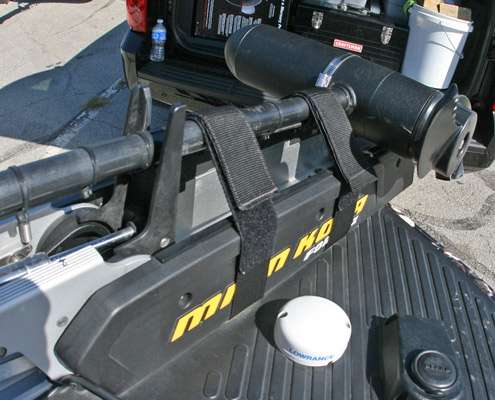
The last thing you want to have to do is change out a trolling motor on the water (or off) and that puts premium on preventing that from happening. Strapping it down is a must. âDouble straps on the trolling motor is the way to go,â Hartley said. âOtherwise, it can move back and forth and thatâs how it gets damaged.â
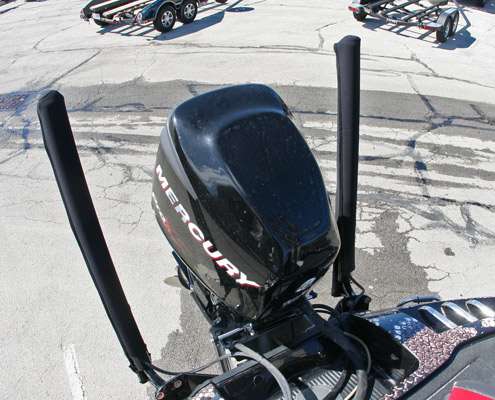
Power-Poles are becoming more and more popular on bass boats, and Hartley offers this suggestion on keeping them in good condition: âPut the cover on the Power-Poles. If they are going to stay up all day, you arenât going to need them, so keep them safe.â
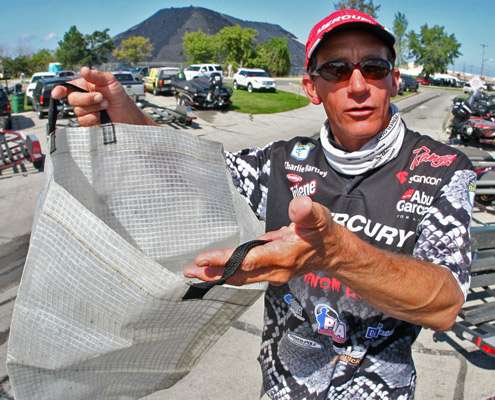
Hartley also has a system for keeping his fish alive. A dead-fish penalty is something no angler wants to incur, so Hartley is sure to take proper precautions to ensure their survival. That starts with a weigh-in bag. âGet the bag full of water,â Hartley said. âDrain the livewell and then dump the water on them. The most important thing to keep fish alive is donât have your livewells on auto. Donât bring water from the top of the lake in.â

Instead, Hartley uses the weigh-in bag and mixes in U2 Pro Formula, which is made for his Oxygenator. âI create a nice bath of ice with that formula before I dump it in on them.â
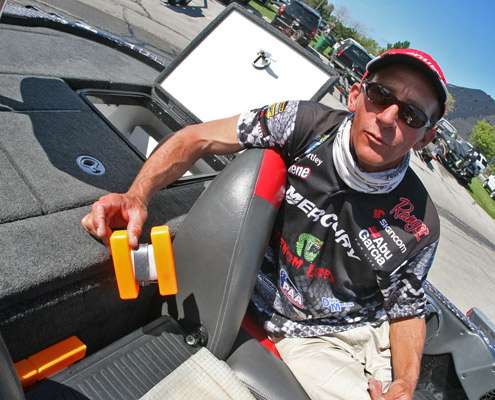
Hartley keeps three bright orange marker buoys in the boat with him. The Elite Series frequently visits lakes when offshore fishing is a must and while GPS units pinpoint the spot, being able to see when to cast helps Hartley dial in. âThe GPS is good, but when you get out there, itâs good to have a visual.â
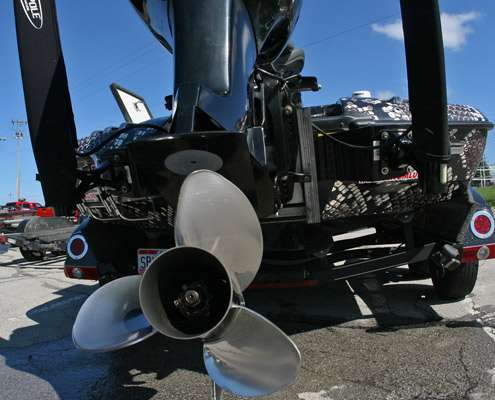
Hartley keeps a back-up prop in his boat, another 3-blade Mercury Fury. Many anglers change props in big water, but Hartley likes the 3-blade for just about any condition. âI find the 3-blade Fury prop works really well all the time,â Hartley said. âItâs a high performance prop and it doesnât blow out in the big waves.â
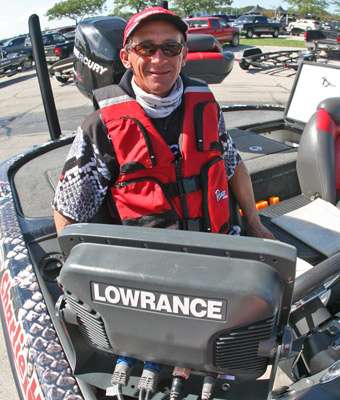
The last addition to Hartleyâs boat is a PFD and in that respect, Hartley is still old-school, wearing the foam vest rather than the new inflatable version. âItâs extra cushioning when Iâm running and if I go over the side, I donât want to rely on something mechanical.â




